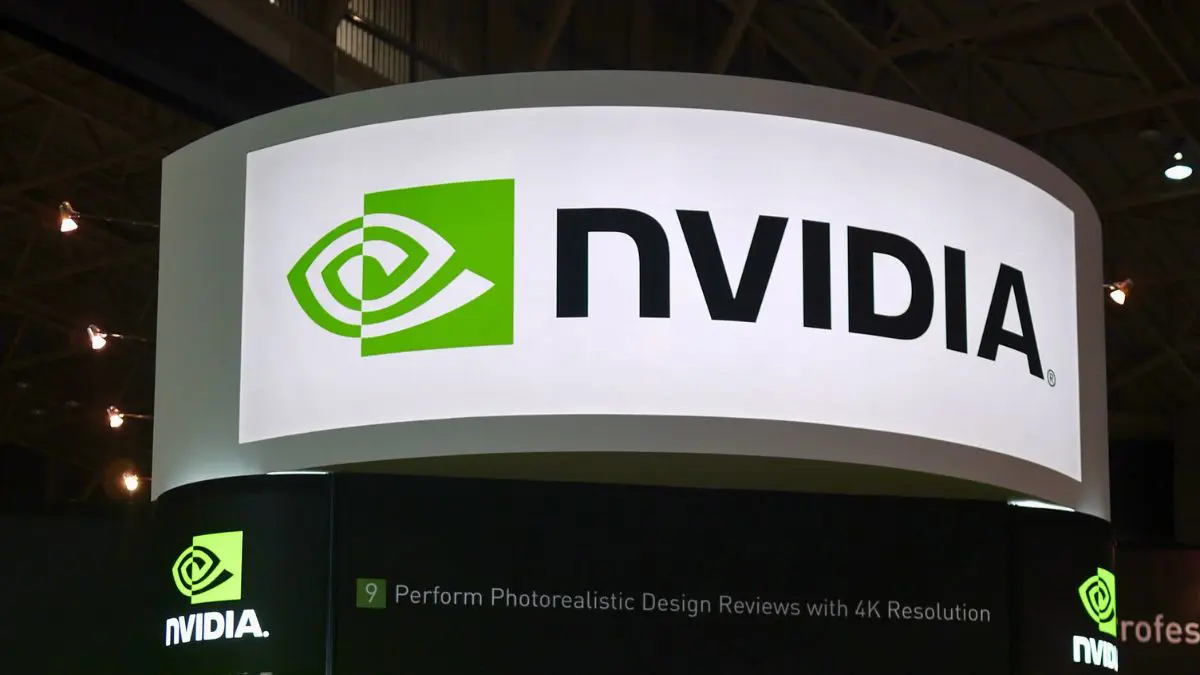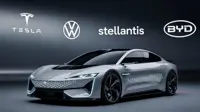Nvidia Nearly Becomes World’s Most Valuable Company Amid AI Boom
By Cygnus | 04 Jul 2025

Nvidia came close to making history on Thursday, briefly hitting a staggering $3.92 trillion market valuation—just shy of becoming the most valuable company of all time. The stock surged as much as 2.4% in morning trading to hit $160.98, momentarily placing it above Apple’s record closing value of $3.915 trillion from December 2024.
Though Nvidia ended the session slightly lower at $159.60, its valuation still stood at an impressive $3.89 trillion. That leaves it narrowly behind Apple, but still ahead of Microsoft, which holds a market cap of $3.7 trillion. Apple, now in third place, closed the day with a value of $3.19 trillion.
This rally is the latest in a string of explosive gains driven by investor enthusiasm around artificial intelligence. Nvidia’s cutting-edge chips power the most advanced AI models, making them the backbone of a rapidly growing ecosystem of AI data centers being built by tech giants like Microsoft, Meta, Amazon, Alphabet, and Tesla.
A Chipmaker Turned Market Titan
Founded in 1993 by CEO Jensen Huang, Nvidia started out designing graphics processors for video games. Today, it has transformed into a critical supplier of AI hardware—and a barometer for investor sentiment around generative AI. Its high-end processors are now at the heart of everything from chatbots to large-scale machine learning platforms.
The company’s market value has surged nearly eightfold in just four years—from $500 billion in 2021 to almost $4 trillion today. That makes Nvidia more valuable than the entire Canadian and Mexican stock markets combined, and even surpasses the total market cap of all listed companies in the United Kingdom.
The scale of investor interest is also reflected in index weightings. Nvidia now makes up 7% of the S&P 500. Combined with Microsoft, Apple, Amazon, and Alphabet, these five companies represent a massive 28% of the benchmark index—leaving millions of retirement savers heavily exposed to the future of AI.
Valuation, Volatility, and a Shifting Landscape
Despite its meteoric rise, Nvidia’s stock is trading at about 32 times analysts’ projected earnings for the next 12 months—below its five-year average of 41, suggesting earnings growth is still outpacing share price gains.
The stock has also made a strong recovery since its low in April, when markets briefly stumbled following renewed global tariff threats from President Donald Trump. Optimism around potential trade deals and reduced tariff impacts has since helped lift investor confidence.
Still, some analysts remain cautious. Kim Forrest, chief investment officer at Bokeh Capital Partners, noted that while AI remains a powerful tool, the current hype around large language and reasoning models may not fully deliver on expectations.
The road ahead for Nvidia isn’t without competition either. In January, Chinese startup DeepSeek introduced a low-cost AI model that outperformed several Western peers, prompting speculation that demand for Nvidia’s premium chips could face pressure from emerging global rivals.
And yet, the momentum behind Nvidia remains strong. In a symbolic industry shift last November, Nvidia replaced Intel on the Dow Jones Industrial Average—a sign of just how central AI has become in the semiconductor space.
Summary
Nvidia’s near ascent to the top of global markets underscores how central AI—and the chips that power it—have become in the modern tech economy. As investor appetite for AI infrastructure grows, Nvidia is riding a wave of transformation that’s reshaping both Silicon Valley and Wall Street. Yet, questions about valuation, global competition, and long-term technological expectations still linger.
Frequently Asked Questions (FAQs)
1. Why did Nvidia’s market value surge recently?
Nvidia’s valuation rose sharply due to booming demand for its high-performance AI chips, which are essential for powering generative AI models and data centers built by companies like Microsoft, Amazon, and Meta.
2. Did Nvidia officially become the most valuable company in the world?
Not yet. Nvidia briefly reached a $3.92 trillion market cap—just above Apple’s record—but closed slightly below it, making it the second-most valuable company for now.
3. What is driving investor interest in Nvidia specifically?
Nvidia designs GPUs that are critical to training large AI models, a rapidly expanding sector. Its hardware is seen as foundational to the future of artificial intelligence infrastructure.
4. How has Nvidia’s stock performed in recent years?
Nvidia’s market value has increased nearly 8x over four years—from $500 billion in 2021 to nearly $4 trillion in 2025, making it one of the fastest-growing tech companies globally.
5. How does Nvidia compare to other tech giants in terms of market cap?
As of now, Nvidia ranks just behind Apple, ahead of Microsoft, and well above companies like Amazon, Alphabet, and Tesla.
6. What impact does Nvidia’s rise have on investors and index funds?
Nvidia now makes up 7% of the S&P 500. Along with other tech giants, it has increased the exposure of index-based portfolios to the AI sector, affecting millions of passive investors.
7. Is Nvidia's stock overvalued given its rapid growth?
Nvidia currently trades at around 32x forward earnings, which is below its five-year average of 41x. This suggests that its earnings growth may be supporting its stock price, though market risk remains.
8. What risks or competition does Nvidia face?
Emerging rivals like China's DeepSeek are producing competitive AI models at lower costs. Geopolitical tensions and tariff risks also pose potential headwinds for Nvidia’s global operations.
9. How has Nvidia’s role in the tech industry changed over time?
Originally known for gaming GPUs, Nvidia has evolved into a key player in AI infrastructure. Its inclusion in the Dow Jones Industrial Average (replacing Intel) signals a broader industry shift.
10. What does this mean for the future of AI investing?
Nvidia’s surge highlights the growing belief that AI will redefine technology and productivity. However, some analysts caution that not all AI innovations will deliver on current expectations.







.webp)














